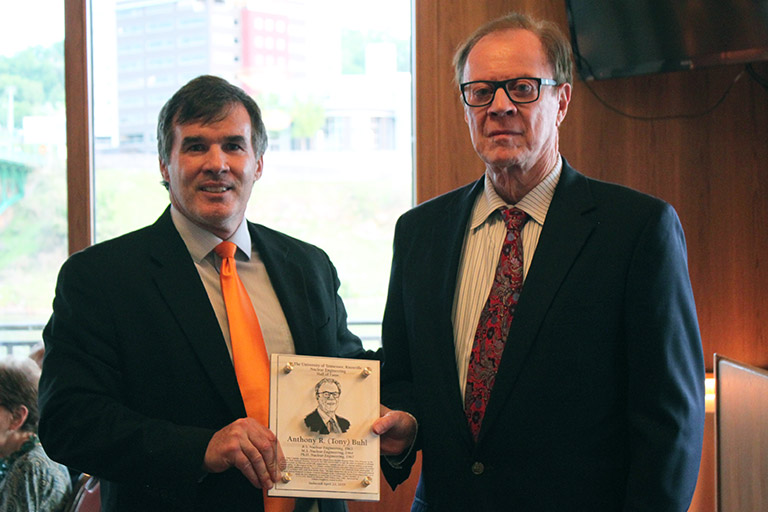
By Laura Tenpenny.
Anthony (Tony) Buhl devoted his career to the safe operation, decommissioning, and clean-up of nuclear facilities unheard of thanks to his work. He also played key roles in recovery from major incidents that you most certainly have heard of, like Chernobyl.
“Although the Russians spoke English, they used an interpreter. It took a few weeks before they spoke to our team directly,” Buhl remembered of the Chernobyl aftermath.
At the request of the US Senate’s Energy Committee, Buhl (BS/NE ’63, MS/NE ’64, PhD/Engr Sci ’67, Executive Development ‘83) supported recovery and investigation efforts following the plant’s explosion. Several years prior, Buhl also served during the recovery of the plant at Three Mile Island (TMI) following its partial meltdown.
“During emergency operation, there were only about ten of us in the control room,” Buhl recalled. “That accident influenced the world’s approach to the study of risk.”
As a result of TMI, international nuclear utilities established IDCOR, the Industry Degraded Core Rulemaking program, reporting to the Nuclear Regulatory Commission (NRC) on severe nuclear plant accidents. Buhl served as its director. He has held leadership positions in several government and nuclear industry regulatory entities, including the NRC.
Perhaps his most important role in industry was as vice president at Kaiser-Hill when he oversaw the clean-up of the Rocky Flats facility, dubbed by the Department of Energy as the most dangerous site in the US. Near Denver, CO, it produced some thirty-two thousand plutonium nuclear weapons during the Cold War.
“It took about ten years and $10 billion to clean up the contaminated site’s four hundred buildings, but we did it thirty-eight years ahead of schedule and $38 million under budget,” Buhl stated. “Today you’ll find about eleven square miles of grass there.”
Before retiring, he managed ORNL’s first Transuranic Waste Processing Center in conjunction with his own business, EnergX, which specialized in environmental management, safety assessment, and operational competency.
The youngest of eight siblings, growing up without electricity or running water at home, Buhl learned to recognize his opportunities. After returning from military service, he worked at ORNL. While reviewing reactor designs for a plant in Hanford, WA, he noticed a serious flaw. He relayed this to a contact at the Atomic Energy Commission (AEC).
“The AEC called me to Washington immediately to fully explain. I was correct. The design had to be changed,” Buhl said. “Then they offered me an amazing job. I was thirty-three, almost overnight a federal branch chief overseeing all non-military reactors.”
He shared this story during his acceptance speech at the 2019 NE Hall of Fame awards ceremony.
“Many opportunities flowed from having the courage to make that phone call,” Buhl imparted. “It was the confidence in what I had learned in this program that propelled me into a world-changing career.”
Buhl adds the Hall of Fame distinction to many other accolades, including the college’s Nathan Dougherty Award (2012) and UT’s Outstanding Engineering Alumnus Award (1977).
As well as time with family, he now enjoys working on his book, Poverty, Sex, and the Nuclear Scientist, a combination of autobiography and insight that is sure to be just as interesting as the life it recounts.